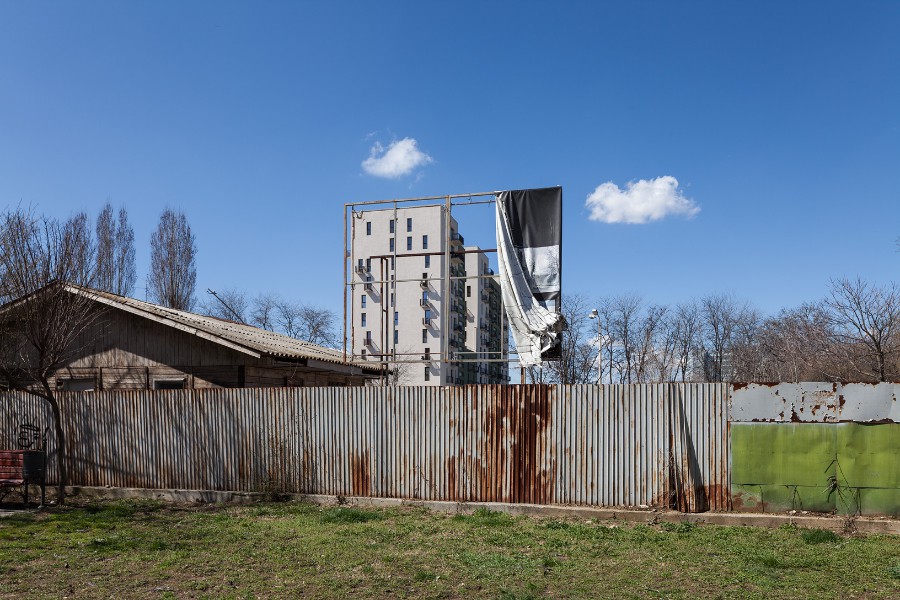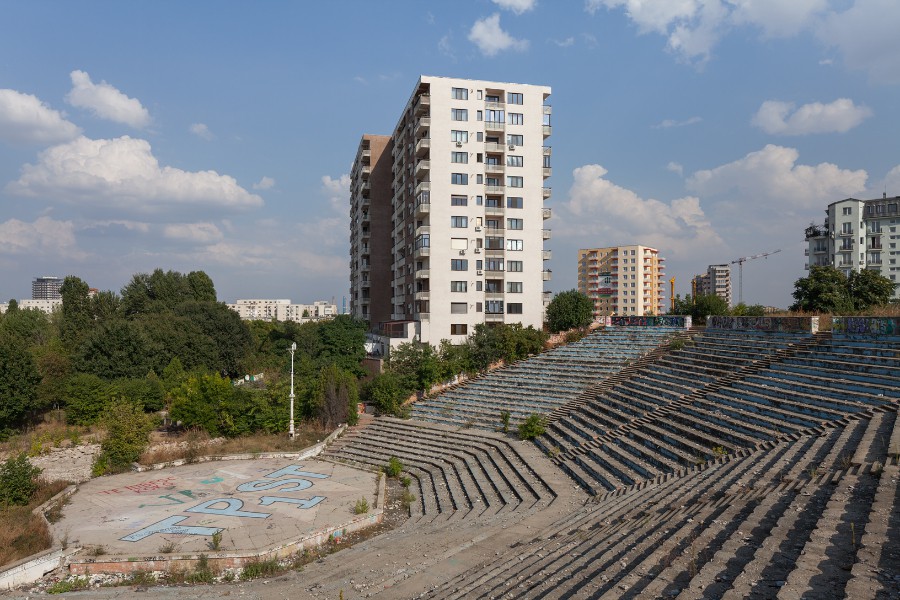Work in progress: Tudor Prisacariu’s take on Bucharest’s ever-changing face

Cables that cut through the landscape, an ivy-dressed block entrance, an amphitheater tucked in between blocks of flats are part of the fabric of a photo book on Bucharest, put together by photographer Tudor Prisăcariu. A face of the city removed from the usual tourist routes but with plenty to offer visually.
“What I find impressive is re-discovering the places that are apparently common, the places where one lives,” he explains, outlining one of the premises of the book. The album, which comprises of 132 photos, is the result of 50 days of walking through the city between September 2012 and November 2014 with the purpose of developing a “visual archive of its every-changing face.” He published Bucharest book published independently in October last year, with half of the production costs covered through a crowdfunding campaign, supporting what started as and still is a passion. Tudor’s day-to-day work is that of a digital designer and developer, owner of verde.io.
Having grown up in the Drumul Taberei area of Bucharest, he knew some of the central areas and the downtown and wanted to see more of the city. “Now I live in Floreasca. I started with this area, Floreasca, Tei, Colentina and afterwards I drew several others and I started covering them. Many things I discovered by chance but I did have some areas that I wanted to reach,” he explains.
The work started after returning to the country after nine years of living in London, where he also studied. The sites photographed are also mapped in minimalistic form on the cover of the book. “I wanted to cover as many things as possible and then make an extensive selection. I largely did that, I didn’t go everywhere but where I did, I think it is representative for the themes and sub-themes.”
Keeping in line with his liking of simple things, the book doesn’t carry any text, and the photos, no caption. A challenge for the viewer to discover the places on their own, a way to escape tourist clichés and an open option to add personal references.
“I was fascinated for example with this photo [below, e.n], this is why it is the first one, because here you don’t have a history of the place, or with the one with the amphitheater [also below, e.n.].”


Bucharest is not Prisăcariu’s first photo project. Among his large-scale ones is Entropy, which was photographed between 2007 and 2010 and dealt with the transformations the country was experiencing. Also, while in London, Loop took shape. The London Outer Orbital Path (London LOOP) is a 240 km signed walk around the edge of Outer London, which he shot in 2011 in an attempt to show a less touristy city.
After several exhibitions, such as ones at the Romanian Cultural Institute in Venice, the Romanian Cultural Institute in Rome or Bozar in Brussels, he wanted to put out a book with this project. “The theme is pretty broad but at the same time very accessible,” he says, explaining that he wanted to show Bucharest as it is. “Of course, every photographer is subjective. I looked mainly at the places where people live, this is what I focused on.” The space surrounding or in between the blocks of flats offered the photo opportunities and thus emerged the “raw, chaotic, multilayered, but also surprisingly poetic and always visually intriguing” city.
Having taken the distance in his London years, Tudor notes the diversity of what can become the subject of photography here. “You can never get bored with some things. Which is good in some respects and not so much in others. Of course, it is easy to be annoyed by Bucharest, at a day-to-day level, the superficial level so to say, from the cars parked on the sidewalk to the dirt. […] It is normal that very many people are affected by this but we are affected much more [than necessary]. I myself have moments when I am irritated by certain things which is not very constructive. It would be better to see what each of us could do rather than have this overflowing negative energy.”
What places in Bucharest would he take a foreigner from Bucharest to visit? “I like Obor, I would take them there. I would take them to see the market. Through the neighborhoods, maybe to take the tram 41.” Possible routes through the realities making up the city, and which he continues to explore.
In April, Tudor Prisăcariu’s work will go on display at Musette Kube on Calea Victoriei. In the meantime, the Bucharest book can be found at the Anthony Frost and Cărturești bookstores and online. More of his Bucharest and country images here.
Photos: Tudor Prisăcariu, Opening photo by Laurentiu Garofeanu
By Simona Fodor, Associate Editor, simoa@citycompass.ro





















